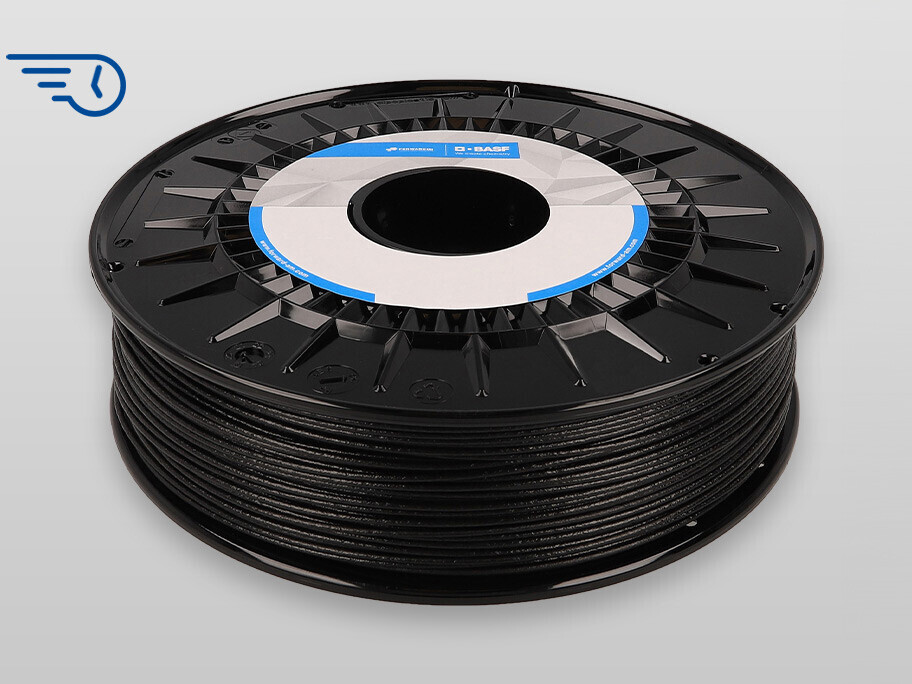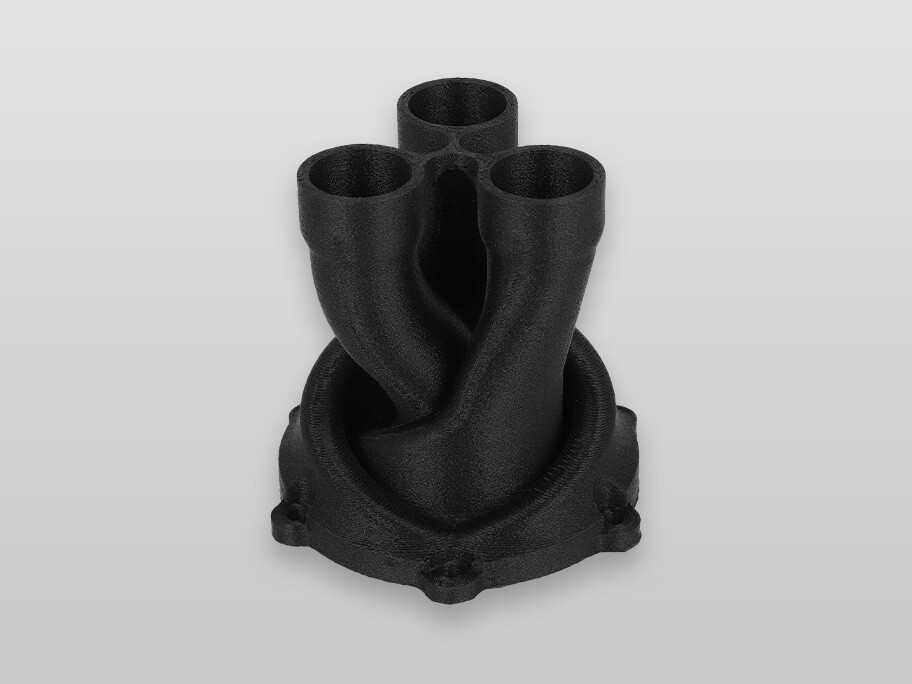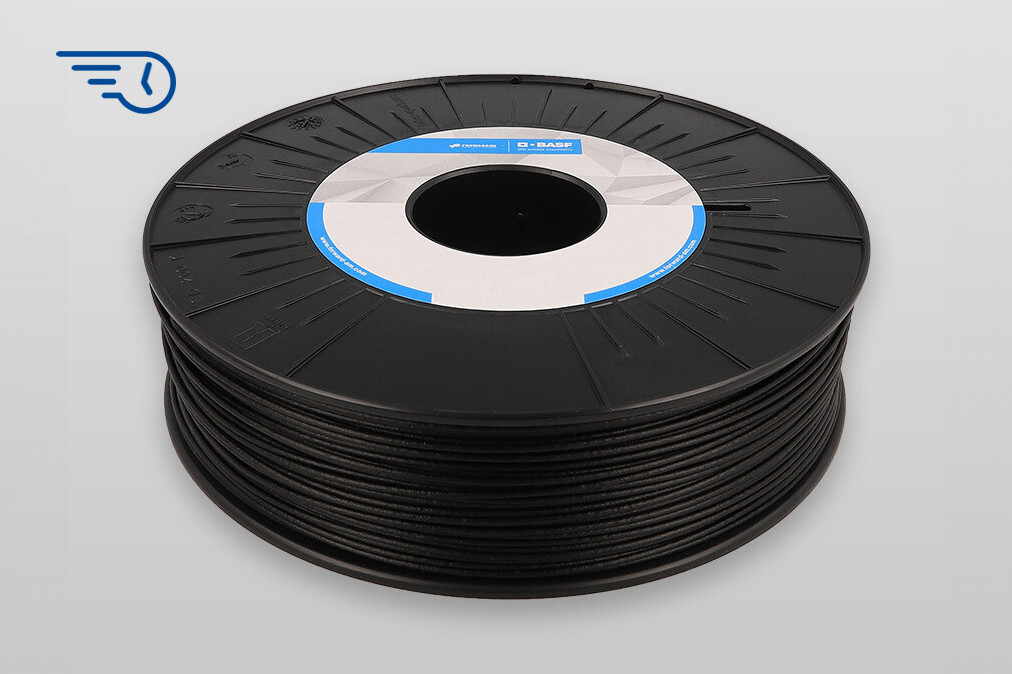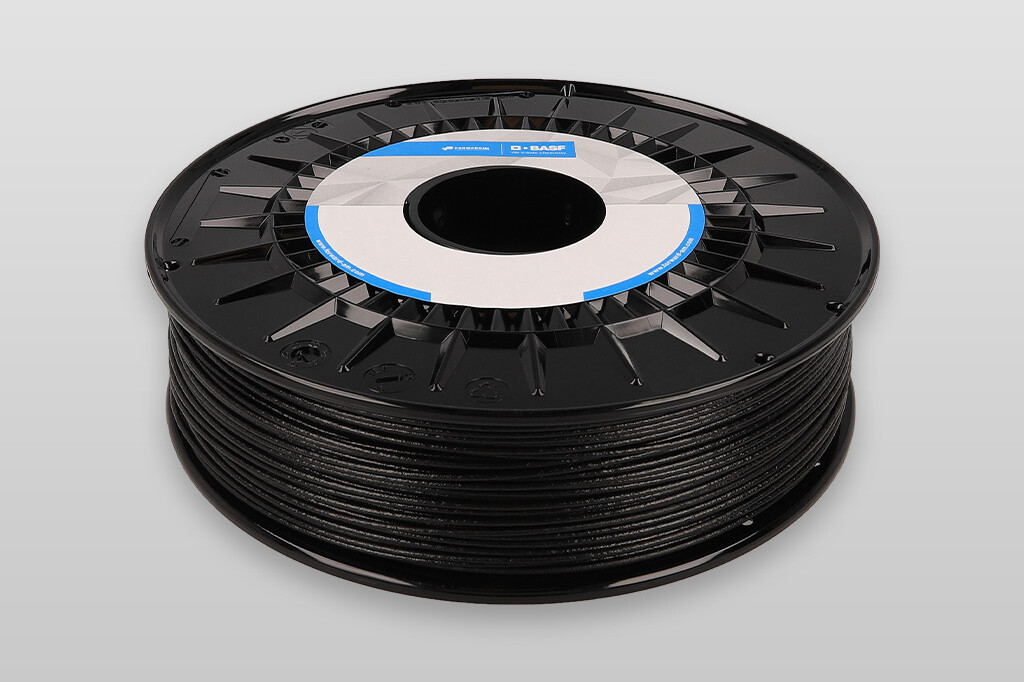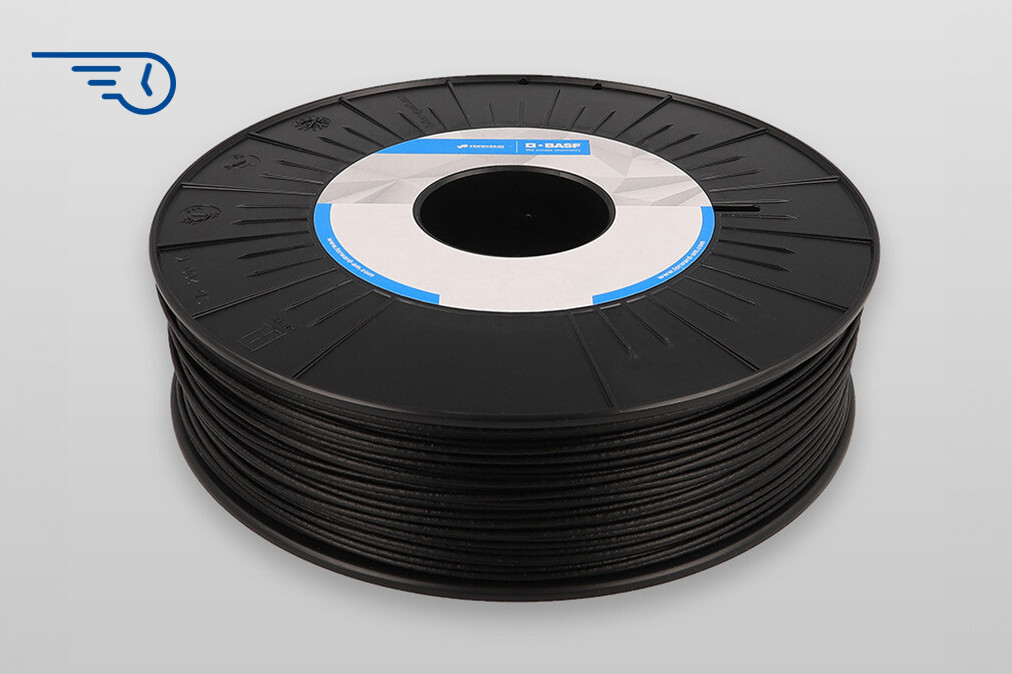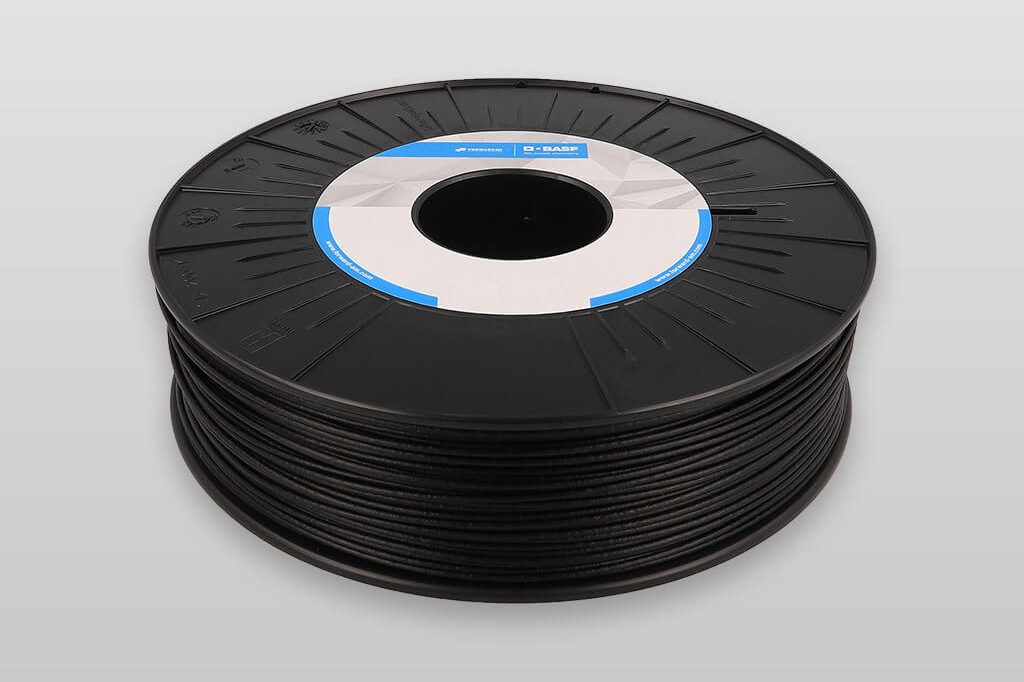Ultrafuse® PA6 GF30
A unique compound
Ultrafuse® GF30-PA6 filament for 3D printing is a reinforced material designed to be compatible with any standard Fused Filament Fabrication 3D printer.
Material Details
- Product Leaflet
- Technical Data Sheet: EN, FR, ES, DE, ZH
- Safety Data Sheet: EN, other languages
- Printing Profiles
Description
Ultrafuse® PA6 GF30 is a unique compound specifically developed for FFF printing. Due to the glass fiber content of 30%, parts tend to warp less. In addition the excellent layer adhesion and its compatibility with the water soluble support Ultrafuse® BVOH make this material the perfect solution to develop industrial applications on an FFF printer.
With its high wear and chemical resistance, high stiffness and strength, Ultrafuse® PA6 GF30 is perfect for a wide variety of applications in automotive, electronics or transportation.
Ultrafuse PA6 GF30 is designed for functional prototyping and demanding applications such as industrial tooling, transportation, electronics, small appliances, sports & leisure
Sustainability Check

Recycled Packaging
Generally recyclable
Benefits at a Glance
- Very high stiffness and strength
- Good chemical resistance
- Resistance to UV light exposure
- High wear resistance
- Excellent layer adhesion
- Works with Ultrafuse® BVOH
Example Applications
- Automotive / transportation
- Industrial tooling
- Functional prototyping
Material Properties
- Tensile Strength (MPa): 78,3 / 46,4 (XY), 14,9 / 12,2 (ZX)
- Flexural Modulus (MPa): 4694 / 2861 (XY), 8103 / 4300 (XZ), 2371 / 1070 (ZX)
- Elongation at Break: 2.2 / 3.2 % (XY), 0,8 / 1,9 % (ZX)
- Impact Strength Charpy unnotched (kJ/m2): 38,9 / 41,8 (XY) , 45,5 / 48,8 (XZ) , 2,2 / 3,1 (ZX)
- Impact Strength Izod unnotched (kJ/m2): 38,4 / 36,9 (XY) , 38,7 / 41,4 (XZ) , 2,6 / 3,8 (ZX)
- HDT @ 0,45 MPa: 110 / 114 oC
Printing Guidelines*
- Nozzle Temperature: 240 - 280 °C
- Build Chamber Temperature: -
- Bed Temperature: passively heated, closed chamber
- Bed Material: Glass
- Nozzle Diameter: ≥ 0.6 mm
- Print Speed: 30 - 150** mm / s
* The product data is provided in good faith and represents typical properties based on our current knowledge and experience; these data are not to be construed as specification limits or mini- mum values. Product properties may be changed without notice. This document does not create any liability, warranty or guarantee of product performance. It is the buyer’s responsibility to determine the suitability of Ultrafuse® products for the intended application.
** To achieve faster printing speeds, it may be necessary to raise the nozzle temperature. The highest speed mentioned has been determined through our latest tests, ensuring optimal surface quality with a 0.6mm nozzle and 0.24mm layer height. layer height. Please note that as printing technology and equipment evolve, we anticipate the possibility of achieving even faster speeds in the future.
Next Steps
Get in touch
Do you have questions about our materials, technologies or services? Get in touch now!
More Ultrafuse® Reinforced Filaments
Ultrafuse® PP GF30
Ultrafuse® PP GF30 contains 30% of special glass fibers that are designed for filament making and 3D printing.
Benefits at a Glance
- Excellent chemical resistance
- Low density
Ultrafuse® PET CF15
Ultrafuse® PET CF15 Combines Easy Processability and very Low Moisture Uptake with Excellent Strength and Rigidity – at an Affordable Cost
Benefits at a Glance
- Strong, rigid components Easy to process
- Very low moisture absorption
Ultrafuse® PC GF30
Polycarbonate-based filament filled with 30% glass fibers for Fused Filament Fabrication.
Benefits at a Glance
- Flame Retardant
- UV resistant
Ultrafuse® PAHT CF15
Ultrafuse® PAHT CF15 is a high-performance 3D printing filament that opens up new application areas in FFF printing.
Benefits at a Glance
- Higher chemical resistance than most PA grades
- High-temperature resistance up to 150 °C
